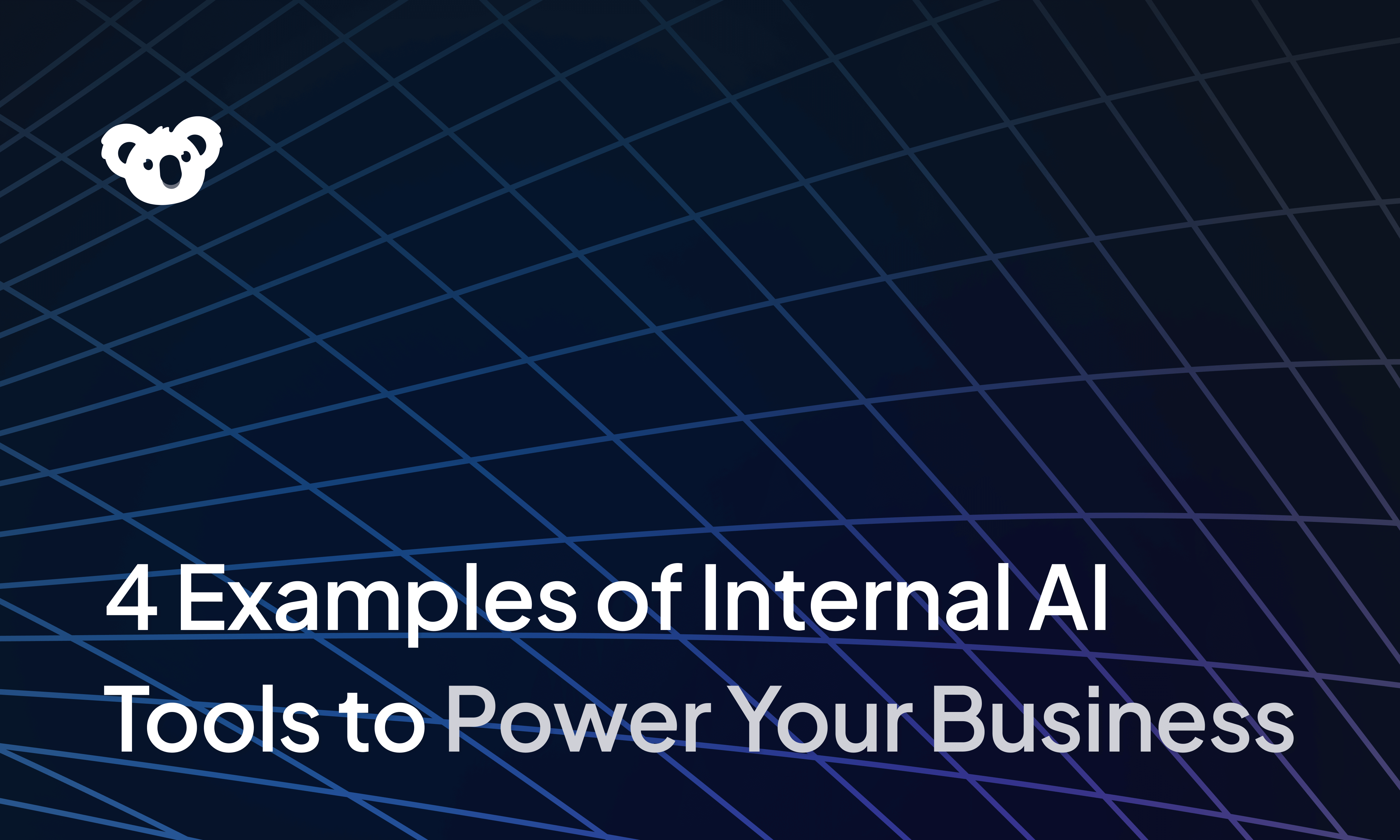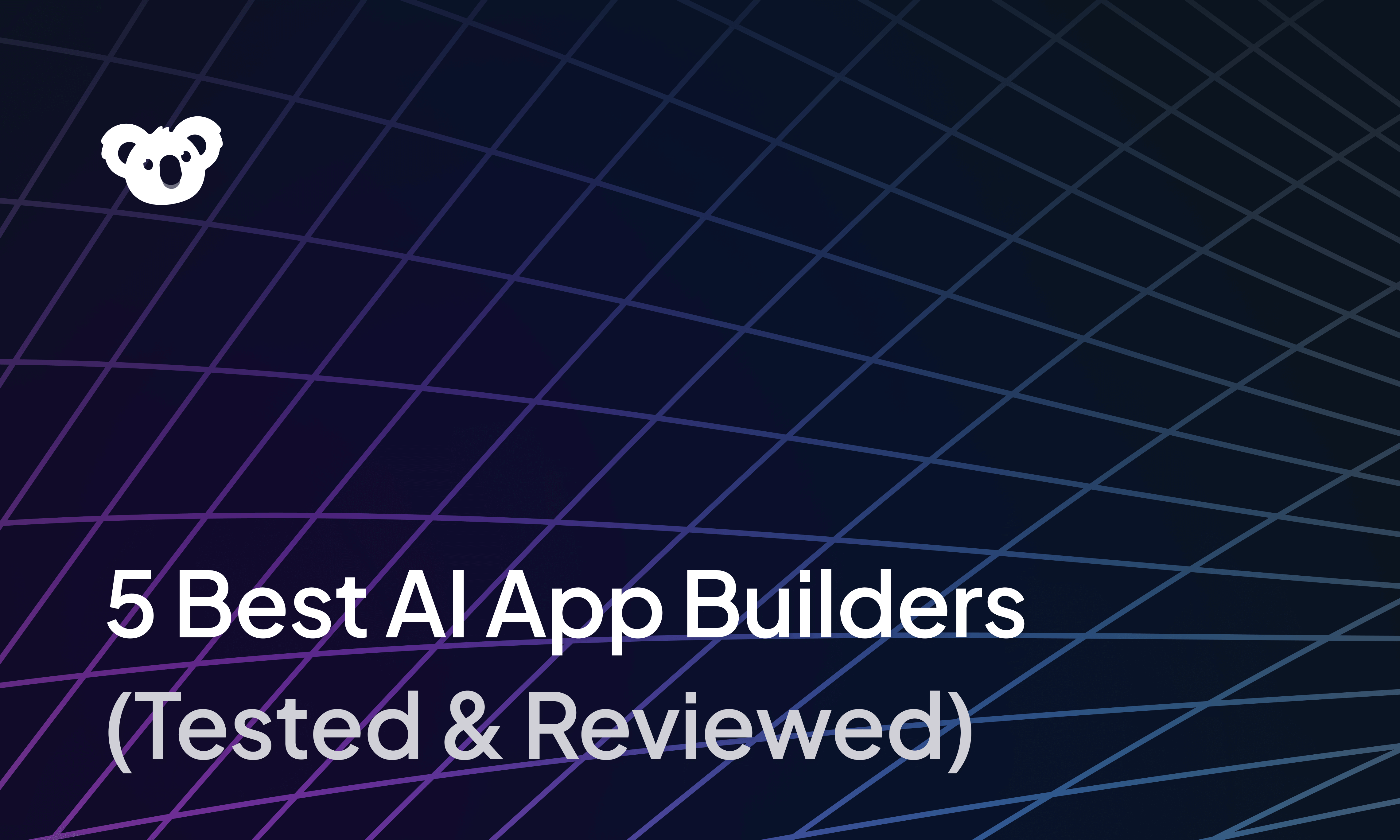


Mainframes still power some of the world’s most critical systems, from banking ledgers to airline booking engines. While they remain highly valued for their stability and security, some enterprises are exploring cloud alternatives to reduce operational costs and access modern development tools.
In this article, we’ll cover:
- Why mainframes still matter and why companies are moving away
- Proven migration strategies for enterprise IT teams
- How tools like Superblocks help with the transition
Let’s first discuss whether you should migrate from a mainframe to the cloud.
Should you migrate from the mainframe to the cloud?
You should migrate from mainframes to the cloud when your current infrastructure limits your ability to deliver, scale, or adapt to business needs.
Here are signs your mainframe is holding you back:
- You can’t hire the people you need: COBOL and JCL skills are rare. Most new engineers don’t know them, and it’s hard to hire experts.
- Development is slow: You can’t ship quickly or iterate without complex workarounds.
- Integrations are difficult: Mainframes don’t support modern APIs. You rely on batch jobs or custom middleware, which slows automation and data access.
- Costs keep rising, and value doesn’t: You pay more to maintain mainframes, but they're less flexible than cloud platforms for rapid scaling, adopting new technologies, or making frequent application changes.
- Costs are unpredictable: Cloud costs scale with usage. Mainframes lock you into fixed contracts, support fees, and staff overhead.
- The business needs real-time data: Mainframes are built around batch. Cloud platforms support APIs and event-driven workflows.
- Scaling is manual: Cloud lets you scale on demand. Mainframes require up-front provisioning.
Challenges in migrating mainframe applications
Outdated formats, undocumented logic, and institutional knowledge that’s hard to replace are the biggest challenges in migrating mainframe apps.
Here are the challenges teams run into:
- Data formats don’t translate cleanly: Cloud platforms can handle various formats but modern apps and analytics tools work more efficiently with standardized formats like JSON, CSV, or relational database tables. Teams need to transform and validate data from mainframes at every step or risk unexpected issues downstream.
- Undocumented business logic: Logic is hardcoded across COBOL, JCL, and batch scripts. Teams rarely document this logic. When teams try to refactor, they run into dependencies they didn’t know existed
- Skillset gaps: Modern teams often lack experience with mainframe internals. Legacy teams may also not be familiar with cloud tooling. That mismatch can slow you down unless you cross-train or bring in hybrid specialists.
- Risk and regulatory oversight: Mainframes often hold regulated data like financials, healthcare records, and customer transactions. You must match existing controls for access, auditing, and encryption in the cloud.
Common mainframe to cloud migration strategies
Teams migrate mainframe workloads in different ways, depending on how much change they can manage.
These five strategies show up most often:
Rehosting (“lift and shift”)
Rehosting moves the existing application as-is to a cloud-based runtime that mimics the mainframe environment. Nothing about the code or architecture changes.
This approach is fast because it skips refactoring. Teams often use mainframe emulators like Micro Focus or OpenFrame. These tools let COBOL apps run on virtual machines or containerized environments with minimal modification.
Mainframe rehosting is ideal when the goal is to reduce infrastructure costs without disrupting operations. But it doesn’t solve deeper issues like outdated code or tight coupling.
Replatforming
Replatforming replaces the mainframe operating environment with modern infrastructure, like Linux containers or managed runtimes. It keeps most of the app logic but shifts it to more portable systems.
This often involves changing dependencies and updating configurations. In some cases, it may include migrating or modernizing the database layer, depending on project requirements. The app logic stays the same, but how and where it runs changes.
Replatforming offers better scalability and maintainability than rehosting. However, it still leaves core code and processes intact, which can limit future changes.
Refactoring
Refactoring means restructuring and optimizing the existing application code, often incrementally.
This approach offers the most adaptability for future updates and system changes. It also takes the most time and effort. You need to understand the business logic deeply, replicate its behavior, and test thoroughly.
Refactoring works best for high-value systems where long-term agility matters more than short-term risk or cost.
Retiring/replacing legacy apps
Teams may retire unused apps or replace them with SaaS platforms that offer equivalent functionality.
This approach is only possible when you understand what the app does, who uses it, and what the impact of turning it off will be. But when it works, it reduces scope and frees up resources fast.
Hybrid migration
Many teams don’t move everything at once. Instead, they keep the mainframe for core systems and build new services around it. This might include:
- Teams wrap COBOL logic with APIs.
- Developers add new UIs in the cloud.
- Organizations sync data to cloud warehouses for analytics.
This hybrid model works well when systems are too risky or costly to refactor right away. It gives teams a way to modernize around the edges without disrupting what already works. Over time, more logic can shift to the cloud as confidence and coverage grow.
Why do orchestration layers help de-risk legacy transformation?
Orchestration layers derisk legacy transformation by providing a control point that manages interactions and workflows between old and new systems without rewriting the entire stack.
In this context, orchestration means building workflows that:
- Trigger legacy jobs like COBOL batch processes
- Move data across systems (e.g., from VSAM to Snowflake)
- Expose mainframe logic through APIs or UIs
- Schedule tasks and conditional logic
- Monitor results, retry failures, and log events
7 ways low-code orchestration accelerates mainframe migration
Low-code orchestration simplifies and speeds up legacy transformation by giving teams a structured, visual way to build workflows across cloud and mainframe systems.
Here’s how it helps during migration:
- Reduce repetitive orchestration work: Most migration projects involve a lot of repetitive infrastructure code like wiring up connectors, mapping data fields, and handling retries. Low-code platforms abstract these tasks. You still need to build and validate core logic, but the orchestration layer handles the operational scaffolding.
- Wrap systems instead of replacing them: You can expose key functions through APIs or workflow triggers. With low-code tooling, you can build a UI, connect it to a COBOL transaction, and deploy it as a usable tool.
- Let non-devs safely participate: Low-code orchestration tools often support role-based access control and audit logging. Analysts, support teams, or compliance leads can trigger workflows, run reports, or review logs without touching production systems.
- Map dependencies early: Legacy systems are rarely isolated. They feed reports, billing, analytics, and downstream APIs. Orchestration tools help trace those dependencies early so you don’t break something downstream mid-migration.
- Reduce migration risk by starting small: Low-code lets you pilot workflows that replicate specific functions, like a nightly export, scheduled report, or data sync. Teams can test performance and behavior without touching production.
- Align IT and business early: Successful migration depends on shared context. Low-code tools make it easier to build prototypes, run tests, and validate assumptions with business stakeholders.
- Add testing and observability into every workflow: Most low-code orchestration platforms include built-in logging, error handling, retries, and rollback steps. That’s hard to enforce consistently when writing jobs manually. With low-code, it’s part of the workflow definition.
Real-world use cases for bridging legacy and cloud systems
Frontend wrappers for mainframe queries
A customer service dashboard might call mainframe APIs behind the scenes, but show a React UI to the agent. Superblocks makes this easy by letting developers pull data from legacy systems, format it, and display it in a modern interface.
Scheduled data syncs to cloud platforms
Many teams start by moving data, not apps. With orchestration, you can set up jobs that extract mainframe data and push it to cloud warehouses like Snowflake or BigQuery.
This supports reporting, analytics, and machine learning use cases. Teams often run these syncs nightly or hourly, depending on business needs. It’s a safe, incremental step toward decommissioning batch jobs and enabling real-time insights.
Automated compliance workflows
Orchestration tools can automate key compliance workflows. For example, when a mainframe job runs, a cloud workflow can log the event, archive outputs, send a report, and trigger review alerts.
This builds traceability across environments and gives compliance teams real-time visibility. It also removes manual steps that often delay audits.
Why Superblocks is a bridge from legacy to cloud
Superblocks gives teams a way to integrate, orchestrate, and extend mainframe-based processes without rewriting everything up front.
Here’s how it supports that bridge in practice:
- It connects cloud workflows to legacy systems: Superblocks can call into existing APIs, databases, or scheduled jobs, including those powered by mainframe backends.
- It acts as an orchestration layer: It lets you build apps, workflows, and scheduled jobs that connect to your existing infrastructure. You can trigger COBOL jobs, fetch mainframe data, and process logic.
- It supports hybrid environments: You don’t need to migrate everything up front. Superblocks supports app architectures with core systems on-prem and extended functionality in cloud-based workflows, databases, and UIs.
- Gradual modernization is built into the model: You can start by wrapping legacy processes. Then add new logic, endpoints, or automation as your team gains confidence. Each step improves the system without risking service downtime.
- You can build user interfaces on top of existing APIs: These UIs give internal teams better access to mainframe data, without needing terminal access or custom scripts. You can also embed logic for validations, approvals, and alerts.
- Batch logic becomes easier to manage: The platform supports scheduling recurring jobs across both cloud and on-prem systems. For example, you can trigger a nightly data export, run a transformation job, and load results into Snowflake all in one unified workflow.
- Governance features are built in: It also supports role-based access control, audit logging, and environment-level permissions. That makes it easier to meet compliance standards during and after migration.
Modernize your mainframe apps with Superblocks
Superblocks acts as an orchestration layer between legacy systems and the cloud. It gives developers tools to automate, extend, and modernize apps and processes without replacing what still works.
This is possible thanks to our extensive set of features:
- Multimodal app building (AI + visual + code): Start with AI to scaffold your dashboard, then refine it visually or extend it with full code. Switch between modes as needed all in the same flow.
- Integrations with systems you rely on: Provides 60+ native integrations for databases, AI tools, cloud storage, and SaaS apps.
- Scheduled jobs and alerting workflows: Automate daily reports, fuel usage summaries, or downtime alerts. Trigger notifications based on thresholds like harsh braking, overdue inspections, or route delays.
- On-prem deployment: Deploy the Superblocks agent in your VPC to keep sensitive data and logic inside your network. Still manage apps, users, and permissions through Superblocks Cloud.
- Audit logging and action history: Track changes, updates, and actions across your fleet dashboard to support compliance, accountability, and operational transparency.
- Observability and traceability: Send logs, metrics, and traces to Datadog, New Relic, or Splunk. Monitor everything from data pipelines to app performance with end-to-end visibility across dashboards, workflows, and jobs.
- Real-time streaming: Stream live telemetry from sources like Kafka, Kinesis, and Pub/Sub directly into your dashboard. Surface location updates, engine alerts, or safety events as they happen.
- Exportable code: Own your applications fully. Superblocks lets you export all your apps as standard React apps so you can host and maintain them independently.
- Automatic deployments: Integrates directly with CI/CD tools like GitHub Actions, CircleCI, and Jenkins, so you can deploy updates just like any other codebase.
If you’d like to see these features in practice, take a look at our Quickstart Guide, or better yet, try Superblocks for free.
Frequently Asked Questions
What is the best strategy for mainframe application migration?
The best strategy for mainframe application migration is a hybrid approach that balances risk, cost, and long-term flexibility. This typically involves wrapping legacy logic while building new cloud services.
How long does a typical mainframe-to-cloud migration take?
A typical mainframe-to-cloud migration takes anywhere from a few months to years, depending on the strategy. A simple rehosting might take a few months, while a full refactoring can take one to three years.
Can mainframe data be migrated to the cloud without refactoring?
Yes, you can migrate mainframe data to the cloud without refactoring. You can export it as-is and load it into cloud platforms for analytics, backup, or other purposes without changing the underlying data structure.
What is the difference between rehosting and replatforming a mainframe?
The difference between rehosting and replatforming is the level of change involved. Rehosting moves the application as is without changing its code or runtime. It runs the same system in a new environment. Replatforming updates the runtime or infrastructure layer, like moving to containers, while keeping the core logic intact.
How do you ensure data integrity during a legacy system migration?
You ensure data integrity during legacy system migration by validating formats, creating transformation rules, and testing data flows before going live. Some teams also run old and new systems in parallel until the results match.
How does Superblocks support mainframe modernization?
Superblocks supports mainframe modernization by letting teams wrap legacy systems in modern workflows, apps, and APIs. You can build UIs, schedule batch jobs, and automate business logic without replacing the mainframe. It supports gradual migration with governance and observability built in.
Stay tuned for updates
Get the latest Superblocks news and internal tooling market insights.
You've successfully signed up
Request early access
Step 1 of 2
Request early access
Step 2 of 2
You’ve been added to the waitlist!
Book a demo to skip the waitlist
Thank you for your interest!
A member of our team will be in touch soon to schedule a demo.
Table of Contents



.png)


